As you start planning upcoming travel (a road trip perhaps?) make sure to follow these tips to help prepare for and handle a roadside breakdown.
Before a Roadside Breakdown: Map Out a Roadside Assistance Plan
It’s wise to decide ahead of time what you’ll do if your car breaks down while you’re on the road. Start by looking at your roadside assistance options and what they cover. Each plan offers different levels of service with different pros, cons and costs.
Here are four common ways to get roadside assistance coverage:
1
AAA Roadside Assistance
One of the best-known ways to get roadside assistance: join the American Automobile Association (AAA). This club for drivers charges an annual membership fee that pays for a package of benefits including roadside service. The benefits and cost vary based on the level of membership you choose and where you live. If you’re a member of AAA, look at your membership benefits to see what is included. For example, you may be limited to a certain number of service calls per year.
2
3
1
Car Insurance Roadside Assistance
Some car insurance policies include roadside assistance or allow you to add it to your policy. Check with your agent or look at your policy to see if you have roadside assistance with your car insurance and what is included. If you don’t have it already, you may be able to easily add coverage.
1
Credit Card Roadside Assistance
Some credit cards offer roadside assistance as a cardmember benefit. Check the terms and conditions of your credit card to see if this perk is included. If it is, read the fine print to learn how to use it and how much it costs.
2
3
1
Car Manufacturer Roadside Assistance
Many car manufacturers offer roadside assistance up to a certain mileage or timeframe on new vehicles. If you have a new car, check to see if roadside assistance is included for you, what it covers and how long it lasts. For example, Ford offers coverage up to 60,000 miles or five years, whichever comes first.
2
3
When you’ve decided which roadside assistance service you’ll use, make some quick notes on the service and store them in your glove box or phone. Jot down this information so you’ll have it in case of a roadside breakdown:
- Your information: Write down the details you’ll be required to provide to get service. For example, AAA requires you to have your membership card and a photo ID. So it’s a good idea to make a copy or take a photo of both as a backup. And Ford requires your vehicle identification number (VIN), your car make, model and color, and your license plate number.
- Benefits and limits: Write down the benefits included and any limits on service, such as the number of miles of towing included, plus how much it costs to go beyond the limit. Some services include a full range of free help, such as battery jumps, a gas delivery, lockout service and flat-tire changes. Others simply call a tow truck and send you the bill.
- Service phone number: Jot down the phone number you need to call for help and put it in your glove box. Also plug the number into your phone contacts so you’re not scrambling to find it while you’re by the side of the road, possibly with spotty internet connection.
Being prepared in this way will allow you to know exactly who to call in case of car trouble and will save you lots of uncertainty and stress in a roadside breakdown.
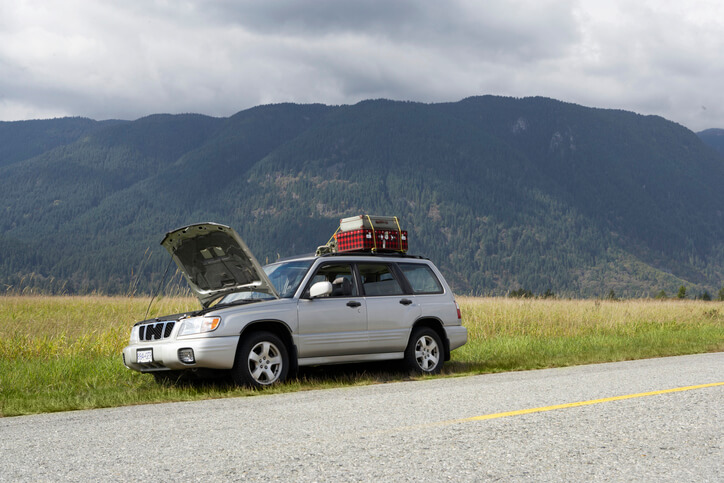
How to Prepare an Emergency Car Care Kit
Put together a kit containing the items you might need during a roadside breakdown. When it comes to supplies, it’s better to be safe than sorry. Your car care kit should consist of a canvas bag or plastic tote bin and contain the following:
- Cell phone charger
- First-aid kit
- Jumper cables
- Flares or reflective warning triangles
- Flashlights and extra batteries
- Blankets
- Paper towels
- Drinking water
- Nonperishable snacks
- Any medication that you or one of your regular passengers may need
- If you live in an area that gets snow: a window scraper, small shovel and kitty litter.
It’s especially important to remember your cell phone charger and keep your phone plugged in while you drive. If you get into an accident, have a roadside breakdown or get stuck in snow, you may need your phone to call for help.
You should also make alterations to your kit based on the season. In the wintertime, you may want to include extra garments, such as gloves and hats. Add extra water bottles, sunblock, instant cold packs and bug repellent in the summer.
Get Your Vehicle Ready to Hit the Road
Before you set off on a road trip, it’s a good idea to get your car, truck or SUV checked over by a trusted mechanic — or do it yourself if you’ve got the skills — to make sure it’s roadworthy.
A pre-road-trip check should include:
- Looking at your vehicle’s fluids: Your car depends on six essential fluids in order to run well, according to Popular Mechanics. First check the oil. You can then check the fluids for the brakes, power steering, radiator, transmission and windshield wipers.
- Testing the car’s battery: A simple pre-trip battery test can ensure your car battery has plenty of power and can help prevent you from getting stranded by the side of the road, according to AAA.
- Looking at the tires: Make sure the air pressure is adequate and the tires have been rotated every 5,000 to 8,000 miles and replaced on schedule. Check to see that there are no bulges on the sides of the tires or other problems like nail punctures. Use the penny test to make sure none of the tires are bald, Firestone recommends. What’s the penny test? Insert a penny head first between the treads. If you can see all of Abraham Lincoln’s head, it’s time for new tires.
- Doing a general vehicle check: You or your mechanic should also give the rest of the car a once-over, including checking air filters, belts, hoses and lights.
Finally, don’t forget to make sure you’ve got a spare tire and that it’s in good working order. You’ll need it if you get a flat tire on the road.
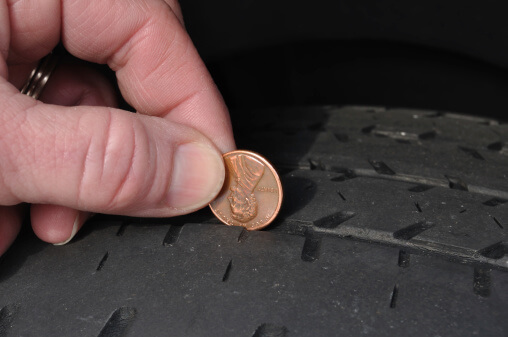
What to Do if You Have a Roadside Breakdown
Your top priority when your vehicle breaks down is to get it to the safest position possible. From there, you can signal for help. If you’re capable of making repairs you can also do that.
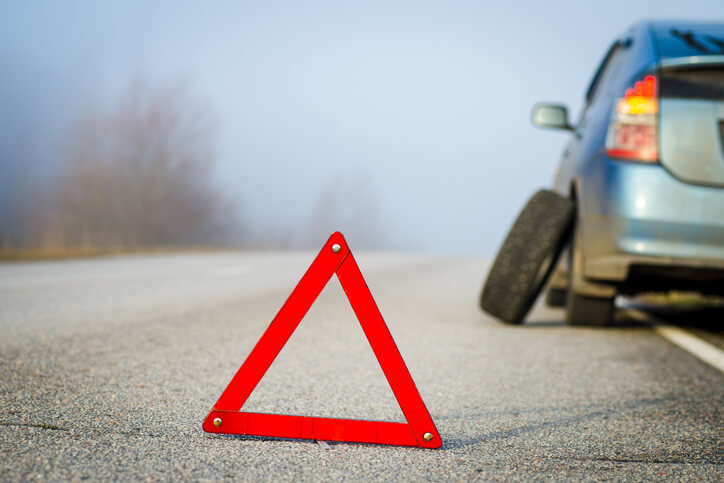
Move Your Vehicle to a Safe Location
Vehicle breakdowns can be terrifying and dangerous. Without warning, your vehicle’s engine may stop. Power steering and anti-lock brakes may stop as well. If your vehicle breaks down, you should try to coast over to the right shoulder. Avoid using your brakes unless you’re going to hit an object. You will need as much momentum as you can get to stop your vehicle in the safest place possible. Follow the same rules of the road that you would if you were changing lanes. Use your turn signals and check your mirrors. Only move into the left shoulder as a last resort.
If possible, pull over on a straight part of the road or before a curve. Avoid stopping your car after a curve. This will make it more difficult for cars to see you, for you to see cars and for service vehicles to stop and help you. Once your vehicles come to a complete stop, put your car in park and engage the e-brake. If you stop your vehicle on the shoulder, turn your steering wheel as far as possible away from traffic. Doing this can help prevent you from rolling into traffic if you’re hit from behind.
It’s okay to stay in your current lane if you’re not able to change lanes when your vehicle breaks down. Again, resist the urge to hit your brakes unless you’re going to collide with another vehicle. Allow yourself to coast until you have come to a stop. Then put your car in park and pull up on the e-brake.
Only Make the Repairs You Feel Comfortable Making
Making repairs on your broken-down vehicle is a judgment call that only you can make. You shouldn’t make this call lightly. You’ll need to assess the situation that you’re in to determine if you should get out of your vehicle. If your vehicle has broken down on the highway you may not want to get out of your car. If your vehicle has broken down in a residential or low traffic area, it may be safe to get out. But only get out if there’s good reason.
You should also consider how comfortable you are with making repairs on your vehicle. If you’re not used to changing your tires in your garage then you shouldn’t change them on a busy highway. Also, don’t make repairs on the side of your car that is exposed to traffic.
Busy roads and highways are the worst places to make vehicle repairs. Fortunately, though, they are the most traveled by tow trucks and emergency services. If your vehicle breaks down in a high-traffic road, it’s likely that a police officer will soon spot you. The officer should be able to help you or direct traffic around your vehicle while you make repairs.
Get Assistance
It’s important that you let other drivers know that your vehicle has broken down. Doing this can help them avoid hitting your vehicle and also help you get assistance. If your cell phone is available, contact a roadside service or the police department. Also, be sure to hang a white cloth out a window that is facing traffic and turn your hazard lights on.
Practice Personal Safety
When you break down on the side of the road, another driver may stop, ask if you need help and even offer you a ride. Never unlock your vehicle doors or lower your windows to talk with a stranger who has stopped, AAA recommends. If you do need help, ask the person, through a closed window, to call the police or roadside assistance.
Customers of The Hartford with towing and roadside assistance coverage can call RESCUE 1-800® Emergency Road Service – offering access to a network of 40,000 towing services countrywide – so help is nearby any time of the day or night, 365 days a year.
Hold Tight
You can run the heater in your car as long as you know the tailpipe is not obstructed. There’s a chance that accumulations could be blocking the tailpipe if you break down in heavy snow. In this situation, turning on your heater could result in carbon monoxide poisoning. If you can safely get out of your car, use the shovel in your emergency car care kit to clear the area behind the tailpipe. You should also bundle up immediately with as many layers as you can get. Do this even if it feels too warm because your car can quickly lose heat. It’s easier for you to warm up the layers if there is still heat in the car than it is if the cabin has become cold.
If your car breaks down in the summertime you can roll the windows up and turn on the air conditioning. This should help you and your passengers stay comfortable. If you do roll your windows down, use the sunblock and bug repellent from your emergency car care kit.
In both seasons, make sure that you leave enough gas in your tank to be able to drive once your vehicle is repaired. Also, never go to sleep in your car with the engine running.
Vehicle break downs can be scary because they’re often unexpected. But if you prepare for a breakdown, it’s no longer unexpected—it’s just inconvenient. By following these steps, you can help stay safe during a breakdown and get back on the road sooner.
Have you had a roadside breakdown? What additional tips would you add to help readers stay safe?



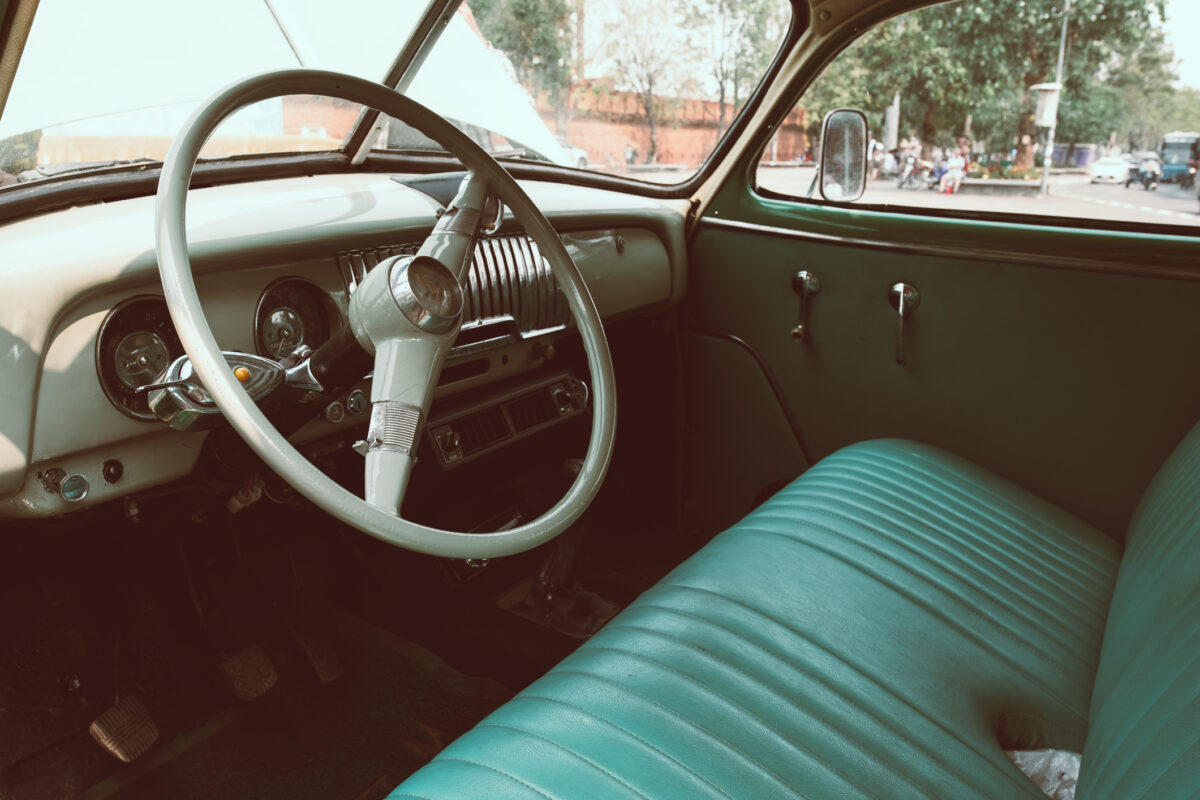
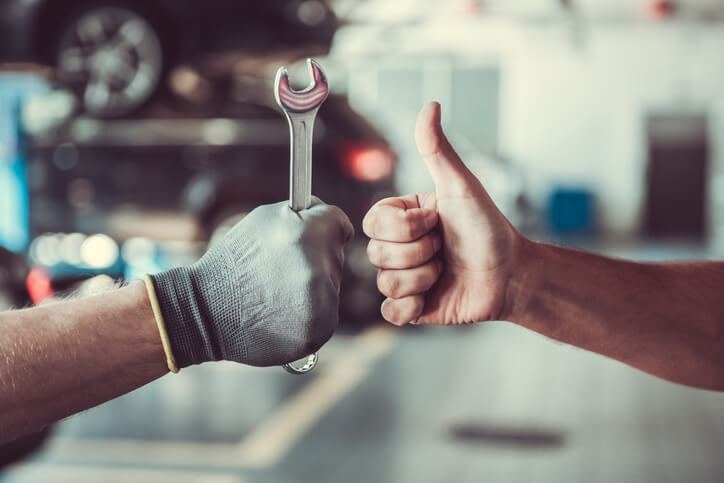
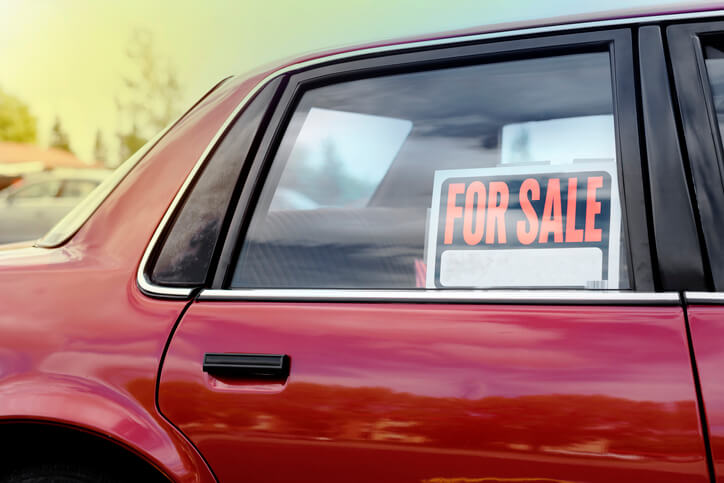

After watching the local utilities place orange traffic cones at the exposed corners of their vehicles, I went online, learned there are 28″ collapsible cones available, and then purchased a two pack.
What to do if out of cell service range?
Thank you!
If you turn on emergency flashers don’t leave on too long. Drains your battery and car won’t start. If on Interstate highway call a sheriff or highway patrol . Sometimes they will stay with you or keep checking on you. Pull far off of road as possible!
Information very helpful and beneficial.. Thank you
Thank you for sharing this information 🙏
Is Roadside service covered under my Hartford Auto Ins policy?
Hi Reesha – For specific questions about what’s covered under your policy, please give us a call at 800-423-6789. One of our representatives would be happy to review this with you.
Keep some games or coloring books for your younger passengers. Keep them busy while you are waiting or fixing a problem.
Three most important items were omitted. First of all, jumper cables are a good idea, however,
that requires another vehicle willing to assist. Far better is a portable jump starter. Also, a portable compressor makes great sense, as does a can of tire foam. As the Boy Scouts say, be prepared.
Good Sam ERS has proven to me to be worth the money. Good outfit for me.
Thank you for explaining that you should make your way to the safest position possible when you breakdown so you can signal for help. I’ve been wondering what my brother might need to do if his semi truck were to break down while on the road. It seems like something like this could be a smart thing to do regardless of whether you’re in a car or a truck.
You’re welcome, Olivia! We’re glad you found the article useful.
I appreciate the advice about how to handle a roadside breakdown. My wife and I are planning a road trip soon. Your tips will be very helpful on our road trip. Also the tip on how to prepare and emergency car care kit was very helpful.
Everything you say is excellent. I’ve been driving for over 50 years and time and time again, someone is stopped on a highway or street disabled and yet they don’t put on their Hazard lights. Please do so! It’s easier and safer than putting out triangles, or flares and does a better job of warning others. The only exception would be if your driving a commercial truck that DOT may require triangles or flares along with Hazard lights.
When you plan your trip know how far between each gas station or service centers where you can possibly limp in with a car not running right.
Do a walk around your car at each stop paying attention to Tires,Gas gauge level. When you stop for lunch etc do not use the radio, heater etc if the car is not running. This will cause the battery to go dead and your car will not start possibly.
Another big drain on the battery is a 12V appliance such as a cooler-Unplug it while you are eating.
Before you leave try changing a tire at home under the supervision of someone experienced changing a tire.
Is it normal to call the Police when you have called a Tow truck because you’ve struck a side rail during a unexpected snowfall? The car slid first one side then the other. Car sounded awful and didn’t
drive correctly. Why would a policeman need to be called and give me a $200.00 ticket. Roads were clear, no other vehicles.
Thanks
living in arizona i dont worry about the cold but do know to check tires and battery as they seem to wear out from the heat i do have roadside assistance in my coverage and wind shield cracks but not sure if there is a deduction charge i have been told by friends its all covered no detuctions? here in arizona?
Mary – Thanks for reading Extra Mile. If you have insurance with The Hartford, please give us a call at 800-423-6789 for specific questions about your policy. Representatives are available Monday through Friday from 8 a.m. to 9 p.m. ET and Saturday from 8 a.m. to 6 p.m. ET.
My car battery completely failed in a parking lot. Absolutely dead. Be aware that if your car is equipped with any services like Onstar or User Connect and your battery is dead, those services don’t work either. It’s super important to keep your cell phone charged and a good idea to have some kind of phone charger that does not rely on a car battery.
If you’re traveling in the winter, a candle can save your life if you get stuck and can’t be reached right away – it provides heat and light. When I lived up North, I always had one in my bad weather ‘kit’.
I added roadside assistance coverage to my insurance policy 2-3 years ago. Last week I had the unfortunate opportunity to use it. I was so thankful I had it. Although I had to wait quite awhile for assistance, it was a relatively easy process, and my vehicle and I were taken home.
I had left my home that morning, and when I got onto the highway I realized something didn’t feel right with the vehicle’s performance. So I took the next exit and started for home, but I broke down about 3 miles before I got there.
Adding AARP roadside assistance doesn’t make a big difference on my insurance premium, but it made a huge difference to my peace of mind when I was stranded.
Great info. I just updated my phone with all pertinent info for quick reference. Thanks.
Do I have any road side assistance included in my auto insurance coverage?
Ronald – Thanks for reading Extra Mile. If you have insurance with The Hartford, please give us a call at 800-423-6789 for specific questions about your policy. Representatives are available Monday through Friday from 8 a.m. to 9 p.m. ET and Saturday from 8 a.m. to 6 p.m. ET.
Michael, thank you so much for your tips on what to do for a roadside breakdown. I like how you mentioned that it is important to let the other drivers on the road know that you are broken down by turning on your hazards in order to prevent getting hit. I think that having an emergency roadside assistance company in mind for you to call would also be very beneficial when your car has broken down.
My car’s engine suddenly stopped functioning while I was driving to work, which is why I’ve decided to start looking for a towing service that may collect my vehicle from the side of the road. Anyways, thank you for this; next time, I’ll make sure to use my tune signals and check my mirror when transferring the car into a safer place. You’re also right about the importance of rolling down the car windows for a while so it wouldn’t be too hot. http://boydtransmission.com/services.html
Had a near blowout on 294 doing 70mph. luckily South Holland was in sight. pulled off there and called emergency # on card and they came in a hour. Luckily I was by a Oasis…So now I keep track of EVERY mile marker sign or nearest exit so they can find where I broke down.
Thank you so much for your tips that you should try to get to the right shoulder and you should avoid hitting your breaks because you will need your momentum. About a week ago, I was talking to my sister, and she mentioned that she bought a car! I am so excited for her, and I want to make sure she stays safe. I will have to tell her about your tips and help her look for roadside assistance services that she could contact if needed.
It really helped when you said to let the drivers around you know that you’re broken down, get assistance, and turn your hazards on to help keep you safe. My daughter lives in Olathe, KS and drives a 20-year-old car. I think it’d be smart for her to find an emergency tow service and their contact information to keep on hand in case her car breaks down.
It’s true that vehicle breakdowns can be dangerous, especially if I don’t know what’s wrong with it. I think I’ll look into some services that offer roadside assistance to make sure that if anything happens to my car, I’ll be ready to call for their help. This way, I can make sure that I won’t have to worry in case it breaks down in the middle of the road.
I found it interesting when you said that it is a a good idea to hang a white cloth from your window and turn your hazard lights on. I can see how doing this can help others avoid hitting you and to stop for assistance. My daughter recently started driving. I will have to tell to be sure to turn her hazard lights on if she ever gets stalled on the side of the road.
Hello, Elisabeth. We are glad you found these tips useful. And congrats on the new driver in your home. I handpicked this article that you may enjoy reading as well: Monitoring Your Teen Driver
Thanks for the recommendation to have an emergency car kit and to make alterations to it based on the season! My husband’s car broke down yesterday in his office parking lot, and he definitely could’ve used some extra water and bug repellent since it was fairly hot and humid while he waited for me to pick him up. We’ll have to find a good towing service to help us move the car, so we can get it fixed. I’ll have to put in some emergency kits once we do so.
Thanks for reading, Shayla!
I wish you had an icon to print this valuable information. Thank you
Hi Geneva, we do! You can find the icon at the top of the article, next to the title.
I have had to use the roadside assistance feature of my policy a few times. Each time I was first asked if I was safe. I felt really good about that. Other carriers in the past could have cared less. Then I was taken care of like I was better than family. (You’d have to know my family). Thanks Hartford.
Thank you for sharing Betty! We are happy to be your carrier 🙂
I’m not sure if I have roadside service or not. And after getting a blowout last night on a dark road in Palm Springs by myself, I didn’t know what to do. So I drove, slowly, to the nearest gas station and found a good samaratin to change my tire. So, how do I find out if I have it or need to get it?